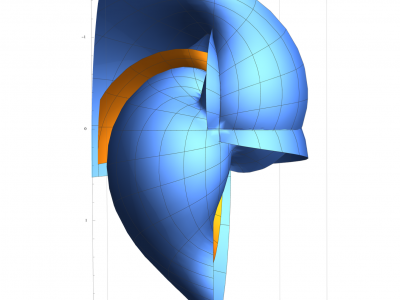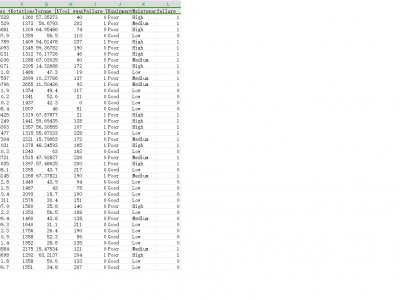Artificial Intelligence
I met Yeshua Ben Joseph, Yahowah, the living Allaha in person in 2007, and this work, may it be entirely unto His grace.
The Cone of Perception 4th Edition Table of Contents
1. Introduction to the 4th Edition
2. The Meaning of Now
3. The Geometric Pattern of Perception Theorems
i. Math for Transforming a Circle into a Cone
a. Theorem 1 - Difference in the Circumferences of Two Circles
i. Lemma1 ii. Lemma 2 iii.Lemma 3 iv.Lemma 4 v. Lemma 5
b. Theorem 2 - Equilateral Triangle of Instantaneous Velocity = Average Velocity i. Lemma8
- Categories:
 61 Views
61 Views
Thanks be to Yeshua ben Joseph, Yahowah, the living One Allaha.
This work is a attempt to describe various braches of mathematics and the analogies betwee them. Namely:
1) Symbolic Analogic 2) Lateral Algebraic Expressions 3) Calculus of Infin- ity Tensors Energy Number Synthesis 4) Perturbations in Waves of Calculus Structures (Group Theory of Calculus) 5) Algorithmic Formation of Symbols (Encoding Algorithms)
- Categories:
 58 Views
58 ViewsThe Machine Failure Predictions Dataset (D_2) is a real-world dataset sourced from Kaggle, containing 10,000 records and 14 features pertinent to IIoT device performance and health status. The binary target feature, 'failure', indicates whether a device is functioning (0) or has failed (1). Predictor variables include telemetry readings and categorical features related to device operation and environment. Data preprocessing included aggregating features related to failure types and removing non-informative features such as Product ID.
- Categories:
 141 Views
141 ViewsEste proyecto se desarrolló para optimizar el análisis de suelos agrícolas en cultivos de papa, con un enfoque en mejorar la precisión y accesibilidad de los diagnósticos de nutrientes esenciales (NPK) a través de tecnología de sensores. En primer lugar, se realizó la calibración de sensores industriales multiparámetro (CWT para NPK y CWT-multiparámetro), basándose en valores de referencia de laboratorios convencionales, lo que permitió configurar un marco de medición confiable.
- Categories:
 213 Views
213 Views
The SINEW 15 Biomarker dataset was extracted from the sensor data collected by a longitudinal study called Sensors IN-home for Elder Wellbeing (SINEW).
- Categories:
 36 Views
36 Views
During gas hydrate extraction, insufficient heating or depressurization can lead to incomplete hydrate decomposition, resulting
in lower-than-expected actual gas production. In this paper, a method for assessing the degree of hydrate decomposition based on an electronic nose
system is proposed. First, the electronic nose system was developed to
collect the information of gas produced by gas hydrate decomposition
under different humidity conditions. Then, a Convolutional Neural
Network combined with Domain Adaptive Compensation feature
- Categories:
 10 Views
10 ViewsThis dataset presents the capacity fade data for eight Lithium Titanate Oxide (LTO) battery cells over progressive charge-discharge cycles. The measurements, recorded at intervals of 250 cycles up to 3500 cycles, track the aging effects on battery capacity over time. The aging procedure includes a rest period of 10 minutes between charging and discharging cycles. Each charging and discharging process was conducted with a constant current of 1 ampere (A). The maximum charge voltage was set to 2.75 volts (V), while the minimum discharge voltage was set at 1.30 V.
- Categories:
 185 Views
185 Views
IWSLT2017-zh-en;WMT18-zh-en;CoQA
The IWSLT 2017 Multilingual Task addresses text translation, including zero-shot translation, with a single MT system across all directions including English, German, Dutch, Italian and Romanian. As unofficial task, conventional bilingual text translation is offered between English and Arabic, French, Japanese, Chinese, German and Korean.
CoQA is a large-scale dataset for building Conversational Question Answering systems.
- Categories:
 17 Views
17 ViewsInterference signals degrade and disrupt Global Navigation Satellite System (GNSS) receivers, impacting their localization accuracy. Therefore, they need to be detected, classified, and located to ensure GNSS operation. State-of-the-art techniques employ supervised deep learning to detect and classify potential interference signals. We fuse both modalities only from a single bandwidth-limited low-cost sensor, instead of a fine-grained high-resolution sensor and coarse-grained low-resolution low-cost sensor.
- Categories:
 393 Views
393 Views




